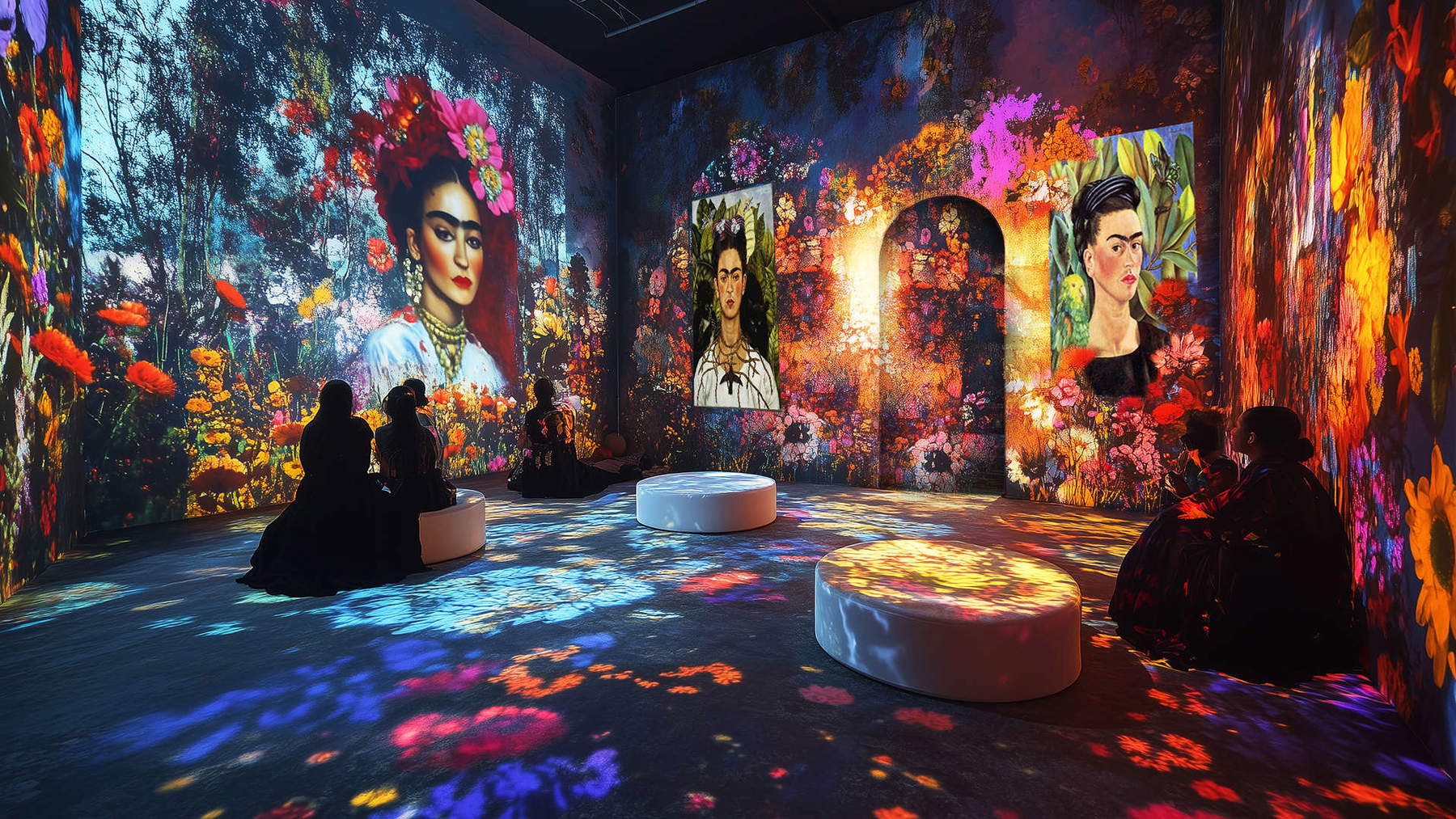I respond to the article The disaster of immersive shows with the utmost respect for journalist Federica Schneck. Not least because, I admit: the ’culprit’ is me-one of those who thinks about and makes immersive shows. I liked the article. The title, The disaster of immersive shows, may sound like a scathing critique, but it actually raises a fundamental point: these are shows, not traditional exhibitions. And it does so by asking intelligent questions that deserve equally serious answers. In recent years there has been a wide-ranging debate about immersive exhibitions, often accused of “spectacularizing art,” emptying it of depth and reducing it to pure visual entertainment. It is a useful confrontation, because it forces us to ask what we mean today by “aesthetic experience,” but it is important to clarify a basic misunderstanding: immersive exhibitions are not meant to replace museums, nor do they present themselves as an alternative to the original work. They are, avowedly, another language, another gateway to art, designed to arouse emotion, awe and curiosity. They are not museums, but visual spectacles. Just as a film does not claim to replace a novel, but can inspire a desire to read it. Art is also emotion, not just contemplation.
The article speaks of “anesthetized experience,” of “electronic simulations” that replace the work with a “broken projection.” But is this really the case? Actually, immersive experiences seek to convey strong emotions, to create a visual, aural and perceptual relationship between the work and the viewer. It is narrative and sensory language, not critical or didactic-and this should be accepted for what it is, not condemned as such.
Emotion is not the enemy of reflection. It is often the first step toward knowledge. And every audience is entitled to its own path to art. Not trivialization, but accessibility

It is easy to accuse immersive exhibitions of reducing art to entertainment. But this criticism often starts from an elitist position that underestimates how difficult it is today to bring new audiences closer to the languages of art, especially younger ones. Immersive exhibitions are not designed for experts (and believe me: I have seen very serious art historians and museum directors get excited and turn into children at the amusement park in front of an immersive wall) or for those who want to learn art history, but for those who already know something about the artist of the day and want to see it in a different way and, above all, for those who would never set foot in a gallery. Is this not a merit? If a kid walks into an immersive room, gets excited, asks questions about Van Gogh or Klimt, maybe one day he will even go and look for the real works. And maybe he will come there with more attentive eyes, precisely because he has experienced an emotion. The quality is not in the format, but in the design.
As in any form of expression, there are well-done immersive exhibitions and superficial ones. But this is about the quality of the creative work, not the medium itself. There are immersive installations made with intelligence, care, poetic depth, capable of combining visual language and cultural rigor. And others, yes, more commercial and forgettable. But this is also true of films, concerts, books and restaurants: that is not why we stop going to the cinema or theater, or eating out. Art is also a market, and that’s okay.
Behind the attack on immersive exhibitions is often a distrust of their commercial success. But the fact that they have a paying audience is not a crime; it is a signal. There is a collective need for immersive cultural experiences. Why not satisfy it with projects that speak a contemporary language without diminishing the value of classical art? There are experimental theater shows and 500-run blockbusters. There are museum exhibitions and traveling formats. All can coexist, if done with vision, responsibility and intellectual honesty. Conclusion: not replacement, but expansion.
Immersive exhibitions do not steal time, as the article suggests. On the contrary, they donate time to those who would never have spent it on art. It is not a matter of “emerging” instead of “immersing”-you can do both, at different times. The important thing is not to confuse the plans. No one claims that an immersive installation on seventeenth-century painting has the power of a live Caravaggio. But it can generate awe, open an emotional breach, and from there begin a personal journey toward beauty. And that, for many, is already so much.
We creatives who work in this field have a specific responsibility: to respect the audience and make every effort to deliver immersive experiences that live up to expectations. And if we also manage to make those who look askance at this new art form reconsider-so much the better. Because yes, perhaps many people miss one thing-immersive show is also art in its own right. It is a child of the futurist evenings organized by Marinetti!
Warning: the translation into English of the original Italian article was created using automatic tools. We undertake to review all articles, but we do not guarantee the total absence of inaccuracies in the translation due to the program. You can find the original by clicking on the ITA button. If you find any mistake,please contact us.